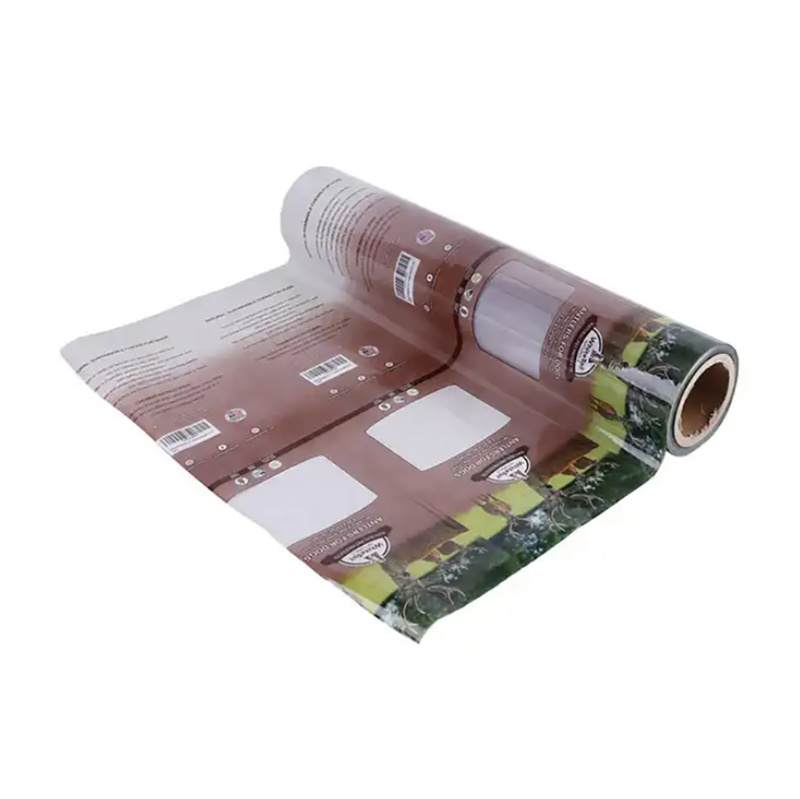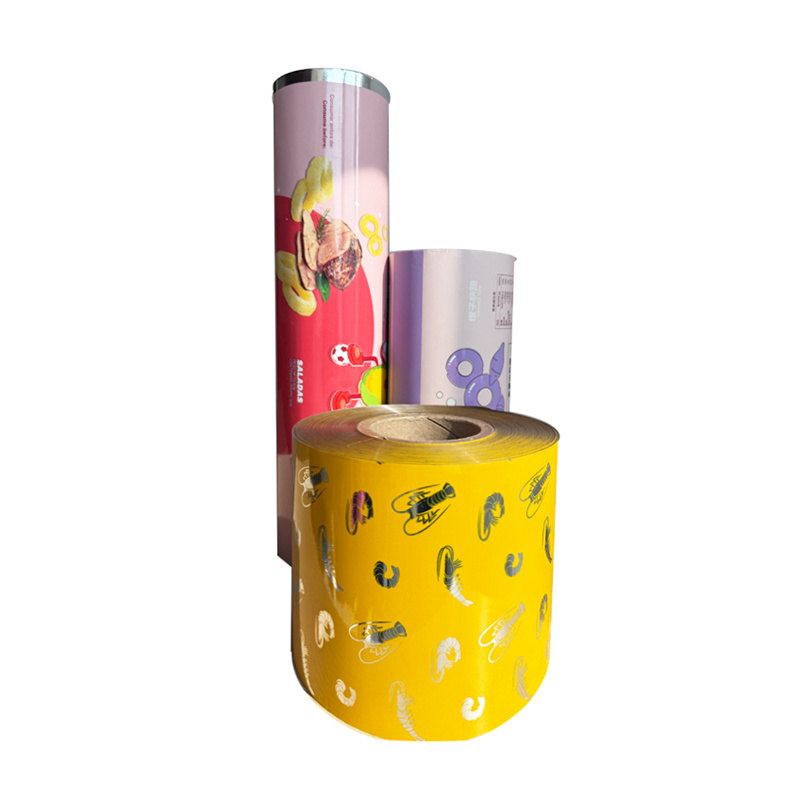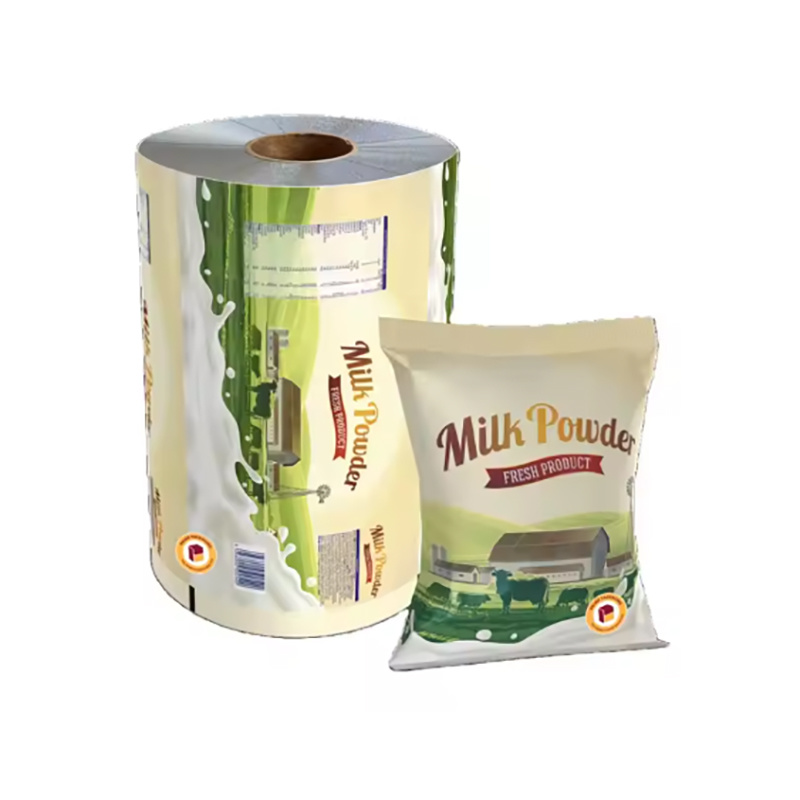Snack packaging bags come in a wide variety of designs and materials. Here is a detailed analysis of snack packaging bags:
Design Types
1. Three-side seal bag: Three sides are sealed, leaving one side open for product filling. This is the most common type of food packaging. Three-side seal bags have two side seams and one top seam; they can be folded or unfolded. When folded, they can stand upright on shelves. Three-side seal bags are suitable for a variety of products, including snacks, seasonings, face masks, and pet snacks.
2. Stand-up pouch: As the name suggests, stand-up pouch food packaging bags can stand independently on shelves, resulting in better and more attractive display effects. Stand-up pouches are widely used for snacks, jellies, seasonings, and cleaning supplies. This type of bag not only has good airtightness but also effectively maintains product freshness.
3. Eight-side seal bag: Developed based on stand-up pouches, this bag has a square bottom and can stand upright. Eight-side seal bags are more three-dimensional, with three planes: front, side, and bottom. Compared with stand-up pouches, it provides more printing space and product display area, better attracting consumers' attention. Eight-side seal bags are suitable for packaging coffee beans, tea, nuts and dried fruits, and pet snacks.
4. Stand-up zipper bag: Based on stand-up pouches, a resealable zipper is added to the top of the packaging for convenient storage and consumption, preventing moisture. This packaging is widely used in the food industry, especially for snacks, puffed foods, meat products, and instant coffee. It not only allows consumers to enjoy the product at any time but also extends the shelf life, providing waterproof, moisture-proof, and insect-proof protection.
5. Back-seal bag: A type of packaging bag where the back edge is sealed. It has no opening and needs to be torn open by hand. Commonly used for small packages of powder, candy, and dairy products. The ingenious design of the back-seal bag is that the sides are cleverly folded inward, forming a unique side packaging style. This bag effectively reduces the exposed part on the sides, saves storage space, and makes the overall appearance more beautiful and generous. In addition, its large capacity is also highly praised, making it very suitable for packaging baked goods, convenience foods, and frozen foods.
6. Spout pouch: Consisting of an independent spout and a stand-up pouch, it is the preferred choice for packaging liquids and powders, such as juice, beverages, milk, and soy milk. This type of bag is particularly suitable for packaging liquid and powder products. Its design facilitates food transportation and storage, and its practicality and convenience are widely praised.
7. Irregular shape bag: Breaking away from the traditional square design, it can showcase a unique style according to product characteristics. Irregular shape bags are suitable for candy, snacks, instant drinks, and specialty products, adding a unique charm to the product.
Material Selection
1. BOPP/CPP double-layer composite material: Oil-resistant, high transparency, good stiffness. Suitable for biscuits, candies, and light foods.
2. BOPP/VMCPP double-layer composite material: Oil-resistant, oxygen-barrier, light-blocking, good stiffness. Suitable for potato chips, fried foods, and dried foods.
3. BOPP/LDPE double-layer composite material: Low-temperature resistant, high low-temperature heat-sealing strength. Suitable for instant noodles, snacks, frozen desserts, and powder packaging.
4. BOPP/VMCPP/LLDPE three-layer composite material: Moisture-proof, oxygen-barrier, light-blocking. Suitable for rice-based snacks and tea.
5. PET/CPP double-layer composite material: Moisture-proof, aroma-retaining, high-temperature resistant. Suitable for alcohol, aromatic foods, and frozen buns.
6. Aluminum-plated aluminum foil bag: Suitable for packaging products that should not be exposed to moisture and require high dryness, such as powdered foods or medicines, food additives, and vacuum-packed cooked food and meat.
When choosing snack packaging bags, in addition to design and materials, the following points should also be considered:
1. Safety: Ensure that the packaging bag meets food safety standards and is non-toxic and harmless.
2. Environmental protection: Choose biodegradable or easily recyclable packaging materials to reduce environmental pollution.
3. Printing quality: The information printed on the packaging bag should be clear, accurate, and comply with relevant regulations.
TAG:
Previous
Next
Previous
Next





Snack packaging bag
Category:
Product inquiry
NOTE: Please leave your email, our professional person will contact you asap!













